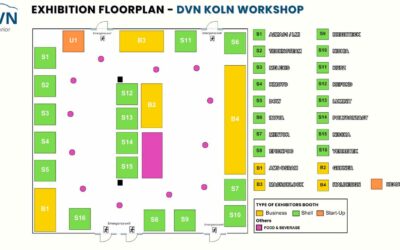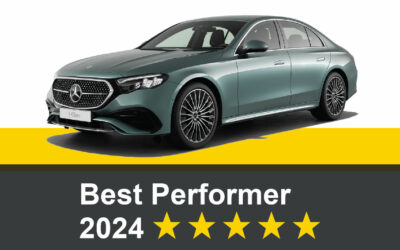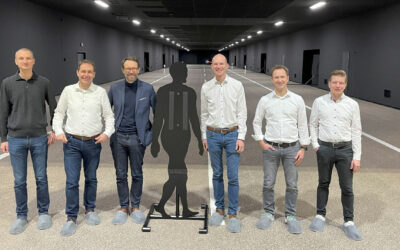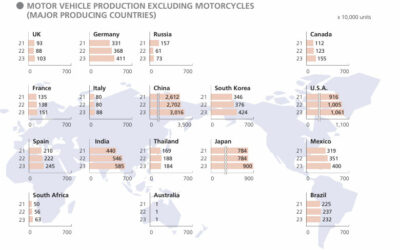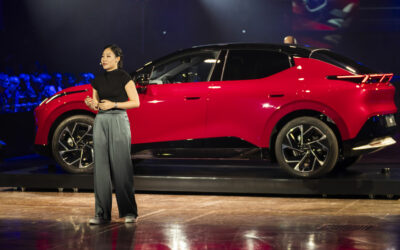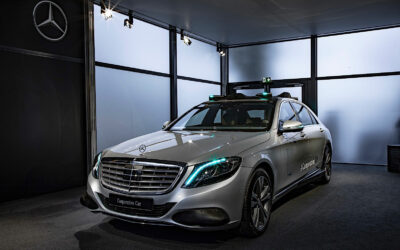CES represents the automobile industry, and this show is important, even if there are fewer automakers and suppliers exhibiting. CES was a bit of a new place to be, for car manufacturers. If you didn’t want to be seen as an old-fashioned manufacturer, you had to show your face at CES. It is still the case, as most of industry leaders are still attending even if the market background is not very shiny!
With fewer automotive exhibitions, overall booth density in the West Hall—dedicated to mobility—was lower, with a few empty spaces. However, numbers are still striking: about 141,000 attendees; 6,000 members of the media, and 4,300 exhibitors, including about 1,500 startups. Among this last group, the Korean tech delegation was very noticeable as it occupied about 25 per cent of Eureka Park, the hall dedicated to startups.
Automaker Presence
BMW, Honda, Zeekr, and Suzuki were the highlights. And from a car interior perspective, BMW was really the star; for the product itself, and how is presented, putting car interior at the center of their communication story!
BMW Panoramic iDrive
BMW Panoramic iDrive cockpit is a pillar-to-pillar projection display combined with a large center screen and an optional head-up display. This new layout will be introduced in 2025 on Neue Klasse, first in the iX3.
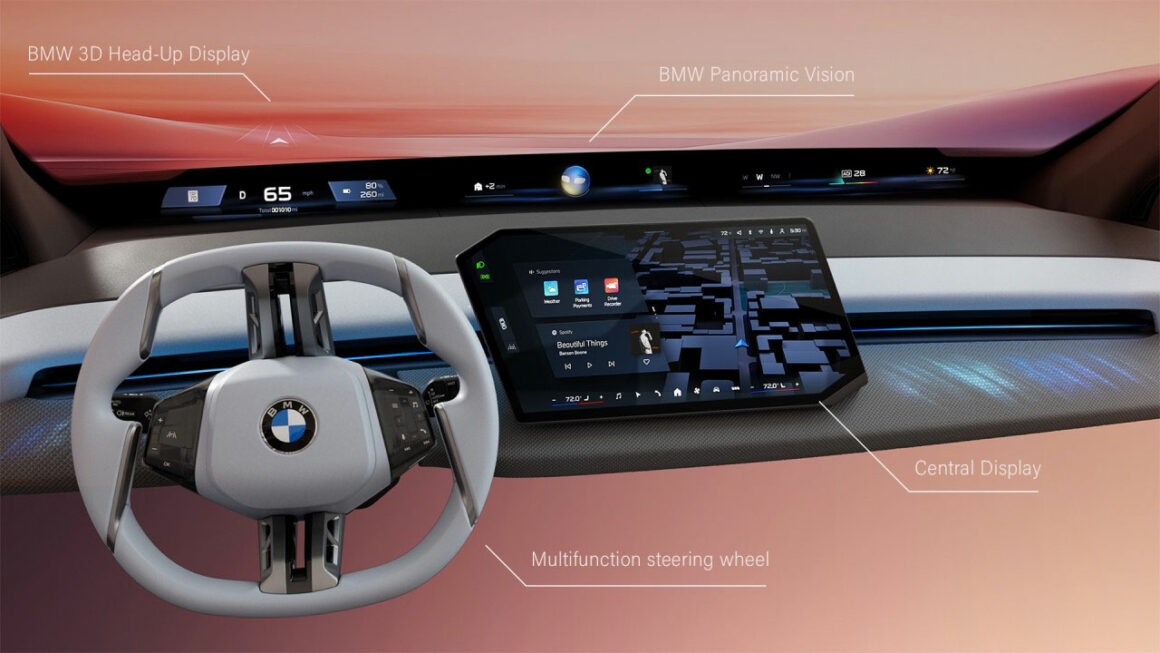
BMW Group showcased the close-to-production version of the new BMW iDrive with Panoramic Vision, powered by BMW’s latest Operating System X.
The new iDrive merges four central elements into a display and operating concept. The main feature is the Panoramic Vision, a head-up display concept newly developed by BMW for projecting content. It reflects information from A-pillar to A-pillar onto a black printed surface in the lower section of the windshield. This information will be visible to all occupants.
The important driving information will be projected into the driver’s line of sight on their side of the car, above the steering wheel. The driver can personalize the content in the central and passenger-side areas via the central display. The integration of the BMW Panoramic Vision creates a 3D effect for the occupants. The head-up display above the Panoramic Vision also shows integrated navigation and automated driving information directly in the driver’s field of vision.
The Panoramic Vision is easy to operate. As many as six widgets (selected content) are possible and can be arranged as desired. A new multifunction steering wheel uses BMW’s shy-tech approach: relevant buttons are illuminated to highlight available functions. The steering wheel serves as the primary physical control, and its buttons provide active haptic feedback.
The new design uses an optimal combination of analog and digital controls through the use of switches, buttons, touch and voice control. There are haptic switches for the windshield wipers, turn signal indicators, exterior mirrors, volume control, gear selectors and window de-icers (in accord with the new Euro NCAP initiative to encourage non-touchscreen controls for those functions). Other functions are optimized for operation using touch/voice control or via the steering wheel, such as telephone functions, media control systems, navigation, assisted driving, personalization of displays, etc.
BMW says the development phase included numerous studies conducted in the brand’s usability labs, in which around 3,000 customers were involved. “High tech meets highly intuitive operation—a quarter of a century of pioneering work and technological leadership in operating concepts has been channeled into the new BMW Panoramic iDrive,” said Frank Weber, member of the Board of Management of BMW, responsible for development.
BMW has opted for a mixture of voice, haptic buttons and touch points. Buttons are still helpful despite all the digitalization. There are haptic controllers for indicators, seat settings and volume, for example.
The new BMW Operating System X is based on an Android Open-Source Project (AOSP) software stack. It is stated to offer greater update and upgrade capability than the prior system.
The BMW Operating System X works together with the Panoramic Vision, optional 3D head-up display, central display, and multifunction steering wheel in such a way that physical and digital experiences merge.
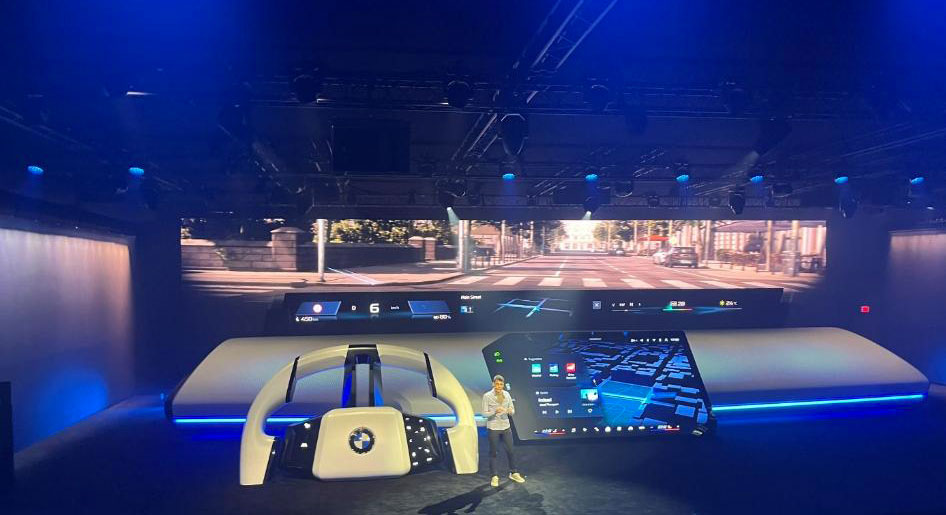
It was introduced to the public in a very Vegas type of show, putting on stage a 10× life size cockpit, presented by a comedian, backed up by experts with a story for spectators to be shrunk, to dimensional consistency with the cockpit. BMW spent millions to make that story exist; their big exhibition area had just two cars on the side, and this Panoramic Display show at the center of stage. It really reflects the importance of user experience within the vehicle.
Honda
Honda showcased the first two models from its 0 Series line of BEVs, a midsize crossover and a low, wedge-shaped sedan with a daring design. The vehicles made their first appearance at CES 2024. Interiors were not visible, as the cars were not opened. Production will begin in the company’s US EV hub in 2026.
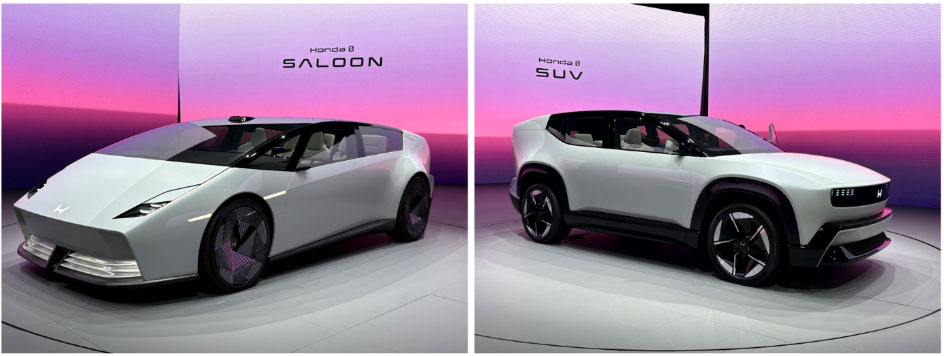
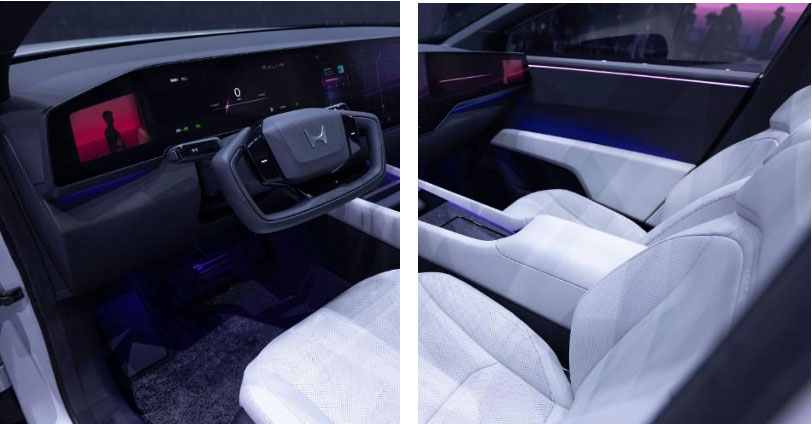
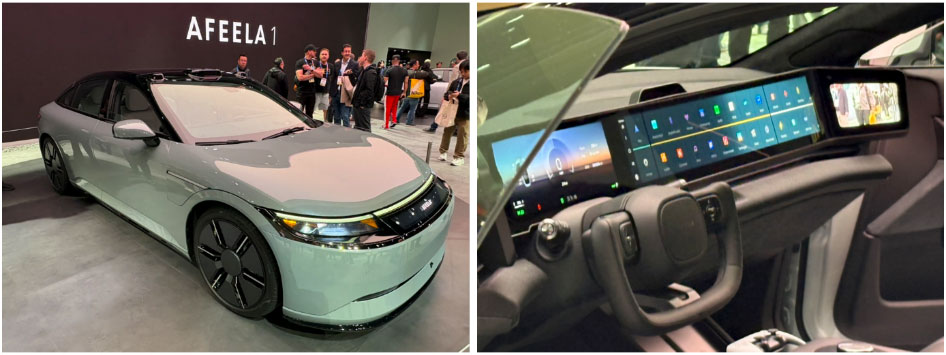
Sony Honda Mobility’s Afeela presented the launch version of their first vehicle, the Afeela 1 sedan, fitted with a pillar-to-pillar physical display. It featured a lidar and two cameras mounted on the roof. Deliveries will start in California mid 2026, initially with a version priced at USD $103k and a targeted range at 500 km with a 91-kWh battery. The car is available to order and will be distributed via a direct-to-consumer model.
Zeekr
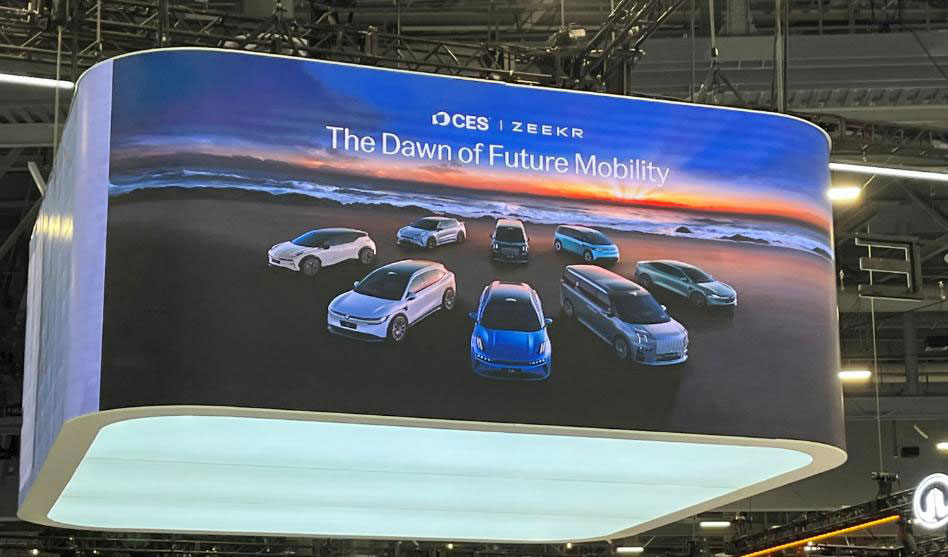
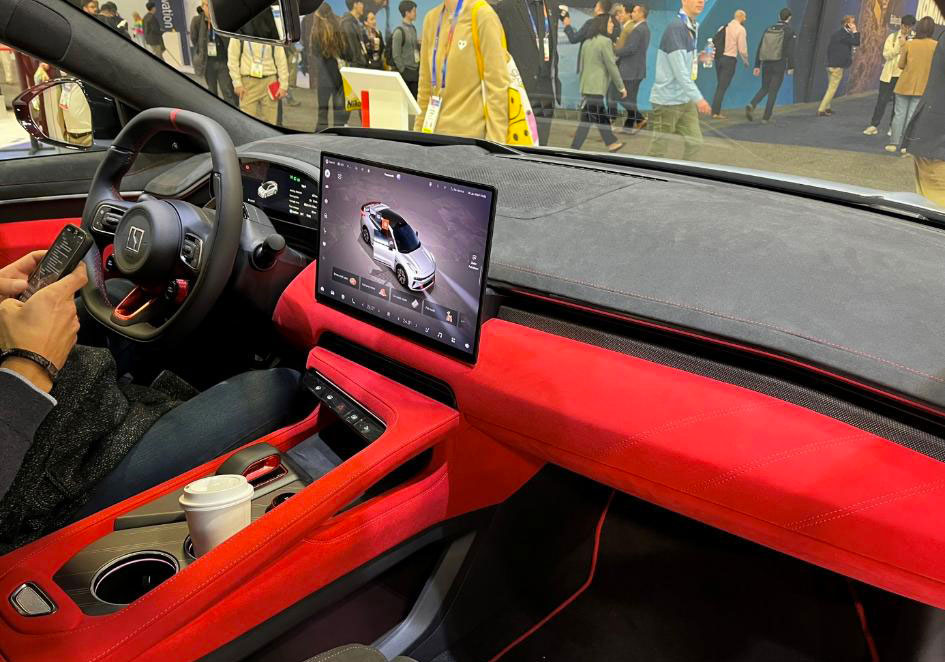
Zeekr, the young Geely subsidiary, had a strong presence with three vehicles on display, including the 001FR capable of 0-100 km/h in 2.02 seconds as well as an EV charging setup. Zeekr also announced the release of an Nvidia Thor-based driving kit for the cars it will deliver to Waymo in the US this year. The fast-growing brand sold 222,000 vehicles in China as well as through 500+ showrooms abroad.
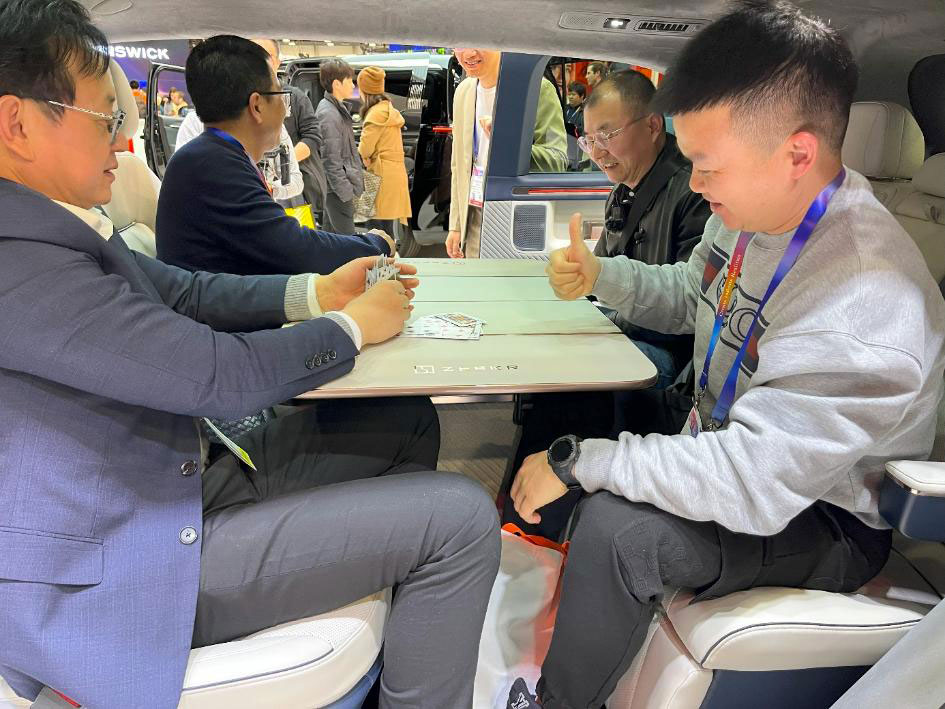
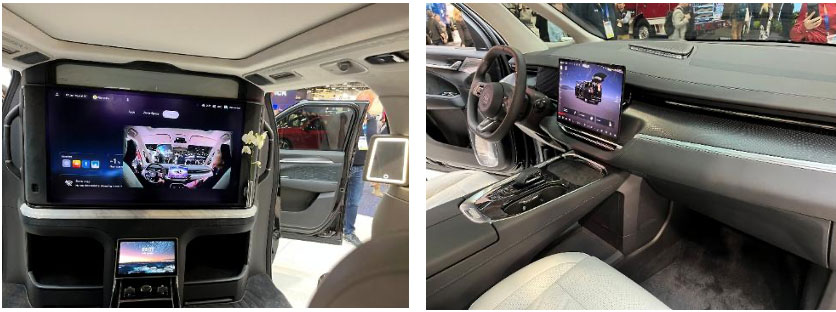
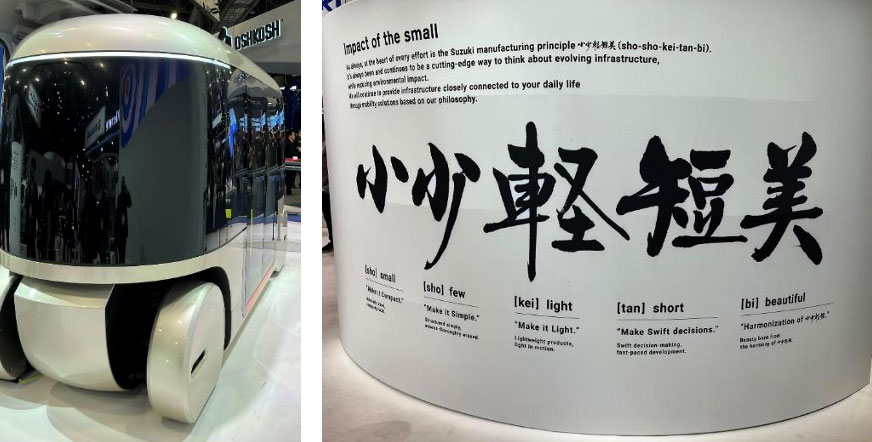
Suzuki unveiled an EV concept, within a “Impact of the Small” lineup, featuring compact vehicles and cutting-edge autonomous tech. Impact of Small is Suzuki contribution to less impactful mobility, thanks to small, simple, light, short, but beautiful, principles to be applied to product design, manufacturing processes, and city infrastructure.
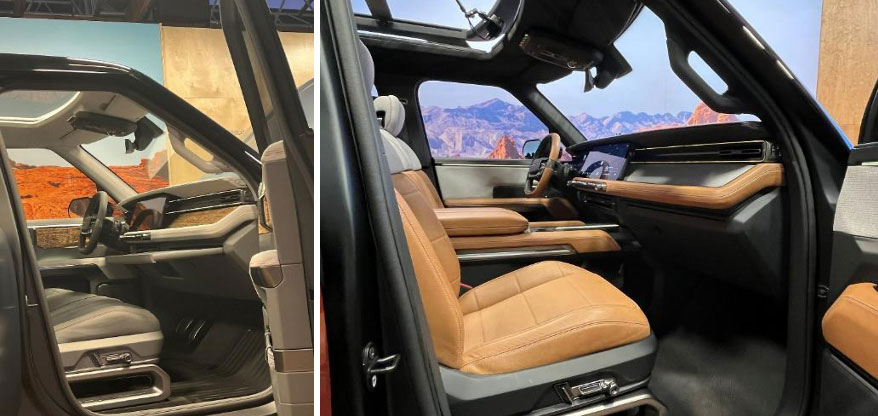
Scout presented their very first products, the Traveler SUV and Terra pickup, both built on the same platform. BEV and EREV versions are offered; the latter was added recently to address the current resistance towards BEVs. Ranges are estimated at 560 and 800 km, respectively. These vehicles, which will be distributed via a direct-to-consumer model, will be VW Group’s first to benefit from the Group’s partnership with Rivian to share zonal and domain electronic architecture and software.
Tier-1 suppliers
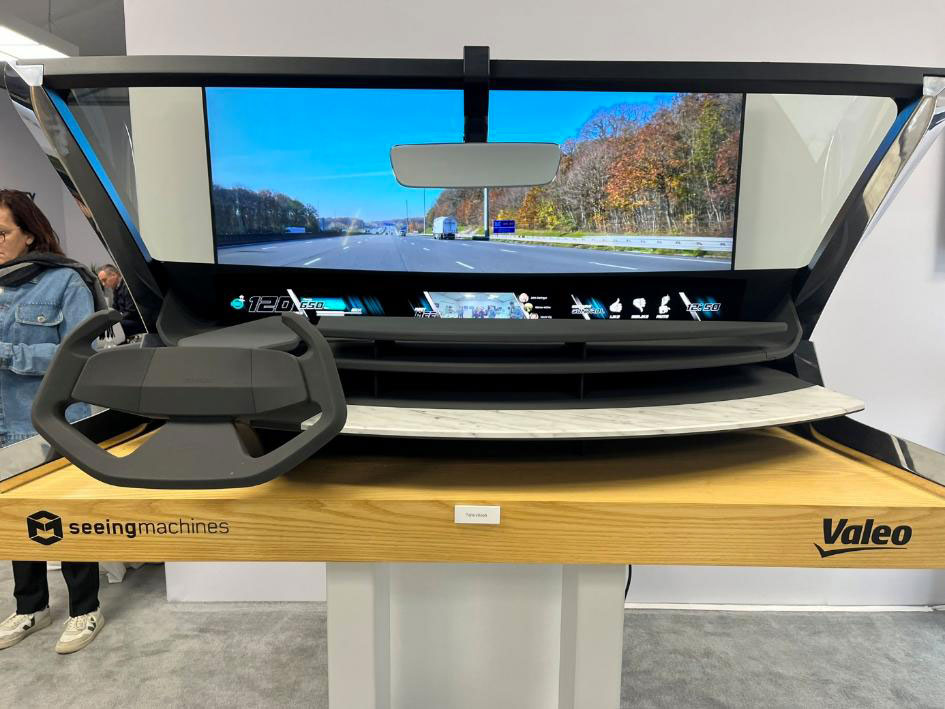
Valeo maintained their full presence with two sites, featuring a wide range of technologies. Valeo also announced a partnership with AWS, aiming to reduce SDV development time by 40 per cent. Their main interior feature from their Brain division is Valeo Augmented Panovision, hidden displays are projected onto the windscreen to keep the driver’s attention focused on the road. It includes seeing machines DMS engine to detect drowsiness, and infotainment options when the vehicle is not in use. And an in-car demonstrator was presented in front of the Center Plaza booth.
OPmobility had a strong presence, doubling the size of its previous booth. The €11bn French supplier showcased technologies ranging from lighting solutions (including the first Adaptive Driving Beam for the US market), to displays integrated in body panels and leveraging SDV capabilities, battery packs, modules, H2 tech and more. Several solutions were developed in partnership with startups like Sonatus.
Continental showcased several technologies. Among those several have been reported in last week edition; ‘Intelligent Vehicle Experience Car’, and “Emotional Cockpit” with Swarovski.
Interior
Key takeaways on Interior, besides the BMW demonstration:
Augmented Reality (AR) on the windshield
AR is conquering vehicles, especially windshields, with various technologies, because it is an ideal and elegant interface to provide drivers with relevant information and increase safety.
Driver Monitoring and other sorts of comfort and health monitoring
The amount of new driver monitoring systems was impressive—as was the potential that results from the data generated. This can be used to develop features that not only support drivers, but also significantly improve general road safety.
Comfort & Wellbeing everywhere
Comfort is being redefined: from massage chairs to individually adjustable LED concepts. The car of the future will become an oasis of well-being and entertainment that could soon compete with the living room in terms of coziness.
Voice activation
Voice activation has been on table for decades, with many first applications along time, which were not very smart. Now, it seems we are getting smart voice HMI interaction thanks to LLM, and natural language supports. It will help simplify interactions, reduce buttons and touch screens, and overall distraction for better safety.
Hyper-personalization
Thanks to ‘AI’, countless possibilities open up to adapt the vehicle to the individual preferences of the user. From ‘AI’-generated wallpapers to experience programs and personalized driving profiles, the car becomes the perfect companion.
SDV
The software-defined vehicle (SDV) is increasingly in companies’ messages. However, we are still in the early stage of deployment, mainly with dedicated hardware and software presentations. ‘AI’ is even more present than in 2024, though such solutions were not very visible yet. Nvidia’s CEO made very ambitious announcements, touting the massive demand growth yet to come for their chips to support ‘AI’ training and inference needs, including for autonomous and assisted driving where the company intends to play a key role (e.g., use generative ‘AI’ to create driving scenarios).
AWS (Amazon Web Services, the cloud division of Amazon) has a big presence in the car, since their cloud is the biggest. They also do a part of computing. In any case, everything is digitalized, everything is connected, and everyone needs a cloud. We are erasing the boundaries between physical and digital. Google has almost no presence at this year CES.
Robotaxis
Robotaxis are reflecting progress toward L4 and L5 automation, the ultimate goal that CES has showcased for years now. Robotaxi players were present with Waymo and Zoox, as in 2024. This mobility mode is quickly gaining in maturity with Waymo reaching 175,000 paid rides per week between Phoenix, San Francisco and Los Angeles, and launches are planned in Austin, Atlanta, Miami and Tokyo. The company displayed the existing Jaguar iPace as well as the Zeekr and Hyundai vehicles which will be operational in 2025 with Waymo’s Gen 6 HW and SW. Zoox presented their purpose-built vehicle which will be used for commercial rides in San Francisco and Las Vegas in the coming weeks.
As said, these technologies support mobility to be more comfortable, personalized, and safer. And the emphasis is on doing! Demos and showcases are all well and good, but in the end, what counts is what actually ends up in the product and inspires customers. We are, at DVN Interior, excited to see what progress we’ll see all along the new models until next CES!
